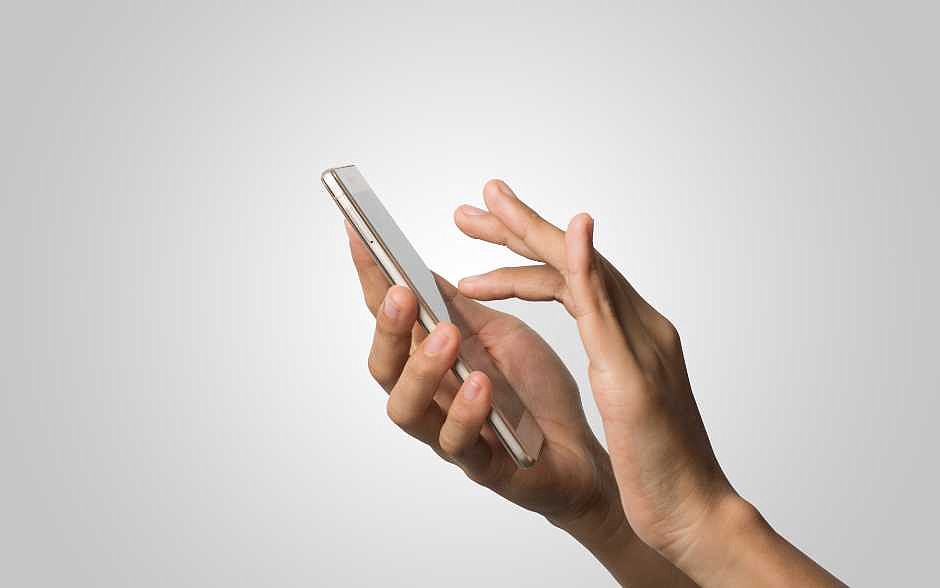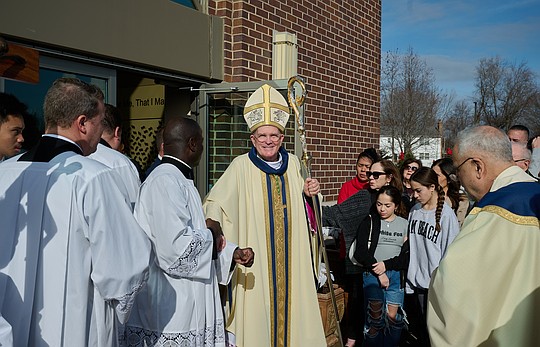Learn media fasting for intentional living
March 9, 2023 at 3:56 p.m.

Did you know there is a Global Day of Unplugging? Having been around for a decade, it began through the efforts of wellness advocates and falls this year on March 3-4 for a full 24-hour unplugging. It's appropriate that it lands during Lent since it fits with one of the church's three Lenten penances – fasting, prayer and almsgiving.
Fasting during Lent is the church's way of helping us take an assessment of our lives and to reflect on our relationship with Christ.
– Why a digital fast?
The sometimes unhealthy choices we make with our digital media may increase our anxiety and lead us to isolation – from the people we most care about but also from God. That's a good reason for fasting, not from food, but from our screens.
Doing a digital media fast provides numerous benefits to our physical, mental and spiritual health.
1. Awareness of God's presence: We recognize with greater clarity God's grace at work in and around us and so respond with generosity and love to a God who pours his superabundant love upon us.
2. Increased energy: Prolonged screen time can sap energy, especially if it is at night, right before going to bed, through texting or viewing. This prevents restful sleep.
3. Better focus: Shutting off phone notifications during work or study can help the brain focus on one task at a time, thereby increasing attention.
4. Inner peace: Putting away devices to notice who and what is around you affords an opportunity to recognize God in the present moment, where peace is found.
5. Better relationships: The more we give attention to those we love, and especially to God, who speaks to us in silence, the stronger our relationships will be, and that will improve our quality of life.
– Ways of digital fasting
Just like fasting from food and drink, media fasts can be done in various ways. They can be intermittent – especially if we need our screens for work or study – and so can be targeted to specific media or apps. Or they can be centered on conscious choices about what we post to (and how often we engage with) social media. Here are some suggestions:
DAILY FASTS
– Turn off your phone from 11 p.m. to 7 a.m. the next morning. Living without digital interruptions for eight hours straight offers a peaceful evening and a complete night's rest.
– Limit your entertainment, gaming or viewing to one hour.
– When catching up with friends or family, suggest no phones during your meal. See where the conversation goes!
24 HOUR FASTS
– Do a complete digital fast by turning off your digital devices and storing them away for a 24-hour period.
WEEKLONG FASTS
– Stay off of all social media for a week. Remove the apps from your phone.
– Fast from your favorite video game or streaming show for a week.
SEASONAL FASTS
– Fast from certain media during Lent. Replace that time with prayer or spiritual reading.
Elements to a digital fast plan:
Identifying some concrete elements to a digital fast will make it more realistic and help you to keep to what you've committed.
– Understand your habits and triggers to media usage.
– Determine the period of the fast.
– Select what you will do to limit access to those problem apps/devices.
– Consider alternatives to time spent on your digital app/device, such as setting aside time for prayer.
– Establish concrete actions to persevere in your fast. What will help you stick with it?
– Predict obstacles that may arise and ways you will overcome those obstacles.
As we continue this Lenten season and perhaps observe an additional National Day of Unplugging (first Friday in March), let us consider our relationship to our digital media. May this practice of digital fasting lead us to center our lives more on Christ and open us to the peace that only he can give.
Sister Nancy Usselmann is director of the Pauline Center for Media Studies in Los Angeles and a media literacy education specialist.
Related Stories
Friday, January 02, 2026
E-Editions
Events
Did you know there is a Global Day of Unplugging? Having been around for a decade, it began through the efforts of wellness advocates and falls this year on March 3-4 for a full 24-hour unplugging. It's appropriate that it lands during Lent since it fits with one of the church's three Lenten penances – fasting, prayer and almsgiving.
Fasting during Lent is the church's way of helping us take an assessment of our lives and to reflect on our relationship with Christ.
– Why a digital fast?
The sometimes unhealthy choices we make with our digital media may increase our anxiety and lead us to isolation – from the people we most care about but also from God. That's a good reason for fasting, not from food, but from our screens.
Doing a digital media fast provides numerous benefits to our physical, mental and spiritual health.
1. Awareness of God's presence: We recognize with greater clarity God's grace at work in and around us and so respond with generosity and love to a God who pours his superabundant love upon us.
2. Increased energy: Prolonged screen time can sap energy, especially if it is at night, right before going to bed, through texting or viewing. This prevents restful sleep.
3. Better focus: Shutting off phone notifications during work or study can help the brain focus on one task at a time, thereby increasing attention.
4. Inner peace: Putting away devices to notice who and what is around you affords an opportunity to recognize God in the present moment, where peace is found.
5. Better relationships: The more we give attention to those we love, and especially to God, who speaks to us in silence, the stronger our relationships will be, and that will improve our quality of life.
– Ways of digital fasting
Just like fasting from food and drink, media fasts can be done in various ways. They can be intermittent – especially if we need our screens for work or study – and so can be targeted to specific media or apps. Or they can be centered on conscious choices about what we post to (and how often we engage with) social media. Here are some suggestions:
DAILY FASTS
– Turn off your phone from 11 p.m. to 7 a.m. the next morning. Living without digital interruptions for eight hours straight offers a peaceful evening and a complete night's rest.
– Limit your entertainment, gaming or viewing to one hour.
– When catching up with friends or family, suggest no phones during your meal. See where the conversation goes!
24 HOUR FASTS
– Do a complete digital fast by turning off your digital devices and storing them away for a 24-hour period.
WEEKLONG FASTS
– Stay off of all social media for a week. Remove the apps from your phone.
– Fast from your favorite video game or streaming show for a week.
SEASONAL FASTS
– Fast from certain media during Lent. Replace that time with prayer or spiritual reading.
Elements to a digital fast plan:
Identifying some concrete elements to a digital fast will make it more realistic and help you to keep to what you've committed.
– Understand your habits and triggers to media usage.
– Determine the period of the fast.
– Select what you will do to limit access to those problem apps/devices.
– Consider alternatives to time spent on your digital app/device, such as setting aside time for prayer.
– Establish concrete actions to persevere in your fast. What will help you stick with it?
– Predict obstacles that may arise and ways you will overcome those obstacles.
As we continue this Lenten season and perhaps observe an additional National Day of Unplugging (first Friday in March), let us consider our relationship to our digital media. May this practice of digital fasting lead us to center our lives more on Christ and open us to the peace that only he can give.
Sister Nancy Usselmann is director of the Pauline Center for Media Studies in Los Angeles and a media literacy education specialist.










